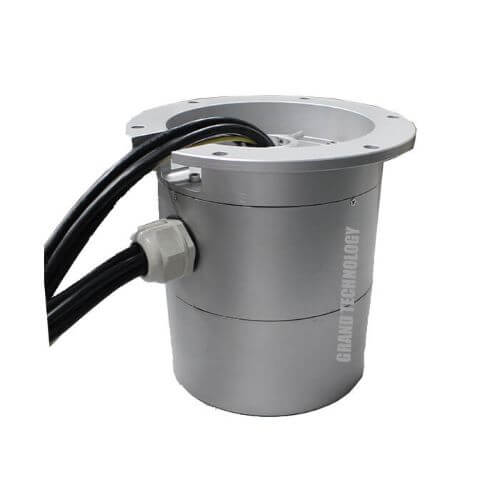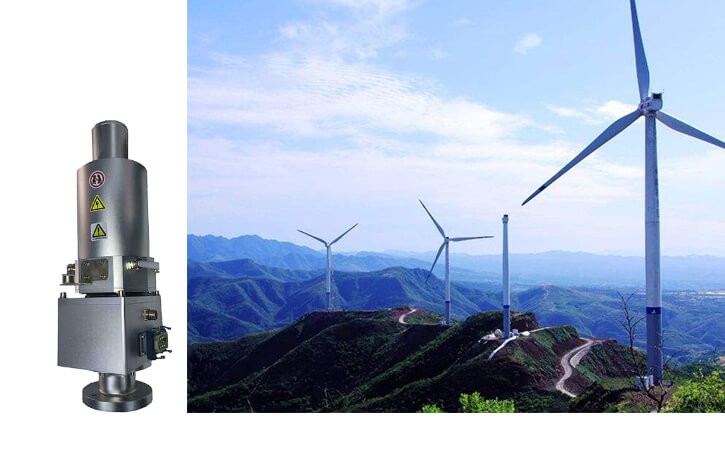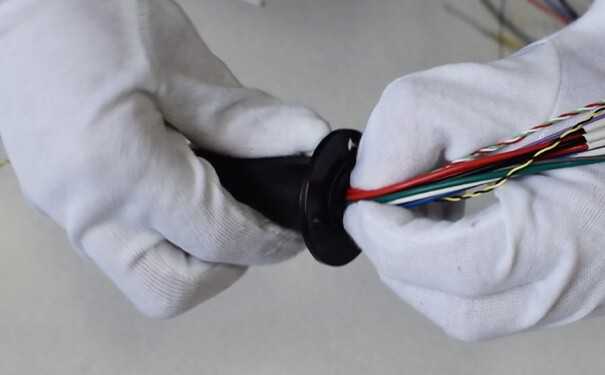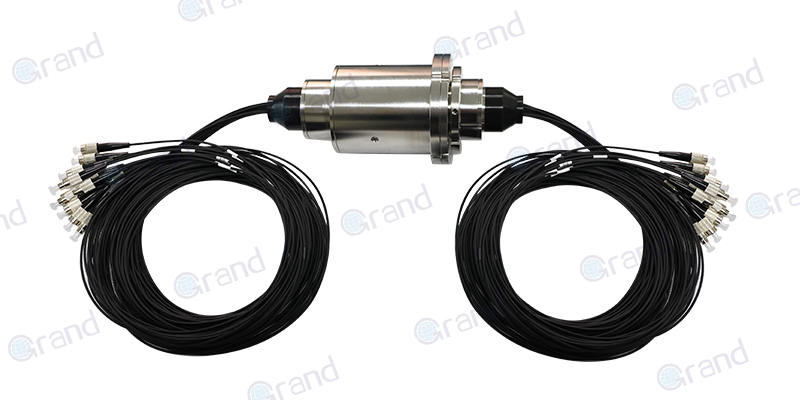Induction motor parts, known for their robustness and simplicity, stand as the workhorses in the industrial world. Powered by electromagnetic induction, rather than direct electrical connections, these motors are pivotal in turning electrical energy into mechanical energy. This fundamental process is what drives machinery in countless applications, from the large conveyor belts in manufacturing plants to the cooling fans in household appliances and the propulsion of electric vehicles. The principle of operation relies on a magnetic field interacting with conductive rotor bars to produce rotation. This efficient conversion of energy makes induction motors indispensable in areas where reliability and durability are critical.
Introduction to Induction Motor Parts
Take, for example, the manufacturing sector, where the consistency of an induction motor can mean the difference between streamlined productivity and costly downtime. In the realm of home appliances, these motors power everything from washing machines to air conditioners, chosen for their longevity and minimal maintenance needs. Their versatility and efficiency also make them suitable for the burgeoning field of electric vehicles, showcasing their relevance across a spectrum of modern technology. The ability of induction motors to operate under harsh conditions without significant wear and tear is a testament to their design, underscoring their importance across various industries.
Importance of Understanding the Parts for Maintenance, Repair, and Performance Optimization
Delving into the anatomy of induction motors reveals a complex interplay of parts, each crucial for the motor’s functionality and efficiency. Understanding these components is not just a matter of academic interest but a practical necessity. Regular maintenance and timely repairs can drastically extend the lifespan of these motors, ensuring that they continue to operate at peak efficiency. For instance, recognizing early signs of wear in bearings or identifying a failing stator can prevent a minor issue from escalating into a system-wide failure, potentially saving thousands in operational costs.
In industries where downtime can mean significant financial loss, the ability to swiftly diagnose and rectify issues is invaluable. Moreover, a deep understanding of the motor’s parts opens avenues for performance optimization. It enables technicians and engineers to make informed decisions on upgrades or adjustments that could enhance efficiency, reduce energy consumption, or tailor a motor’s performance to better suit a specific application.
Consider the case study of a large-scale paper mill that faced regular production halts due to motor failures. By educating the maintenance team on the specific functions and failure signs of each induction motor part, the mill saw a drastic reduction in unplanned downtime. This was achieved not only through regular maintenance checks but also by optimizing motor parts for the specific loads and operating conditions of the mill, proving the direct impact that knowledge of induction motor components can have on operational efficiency and cost savings.
Through engaging explanations, real-world applications, and a commitment to addressing common misconceptions, this article aims to illuminate the importance of each induction motor part. By doing so, it provides actionable insights for maintenance, repair, and performance optimization, emphasizing the critical role that these motors play across various sectors of society.
Fundamental Induction Motor Parts and Their Functions
Stator: The Heart of Induction Motors
The stator acts as the stationary part of an induction motor, housing the motor’s winding circuit. Often referred to as the heart of the motor, it plays a crucial role in generating the magnetic field that is necessary for the motor to operate. Made from laminated steel to minimize losses, the stator’s windings are designed to carry alternating current (AC), which creates a rotating magnetic field. This magnetic field is the primary force that interacts with the rotor to create motion. The intricacy of the stator’s design and its efficiency in generating a powerful magnetic field directly correspond to the motor’s overall performance. For instance, in high-speed train propulsion systems, the stator’s ability to produce a rapidly changing magnetic field enables the train to reach and maintain high speeds with remarkable efficiency.

Rotor: The Moving Part That Matters
Positioned within the stator, the rotor is the rotating core of the induction motor. It consists of conductive bars (usually aluminum or copper) that are connected at each end by metal rings, forming a cage-like structure. This configuration allows the rotor to interact with the stator’s magnetic field, resulting in rotation. The beauty of the rotor’s design is in its simplicity and effectiveness—the electrical current induced in the rotor, combined with the magnetic field from the stator, creates a torque that drives the rotor to spin. This fundamental process is what powers the rotating shaft, leading to mechanical work. In industrial mixers, for example, the rotor translates electrical energy into the mechanical force needed to mix materials, showcasing the rotor’s vital role in transforming energy into useful work.
Bearings: Ensuring Smooth Operation
Bearings are critical components that support the motor’s rotating shaft, allowing it to spin freely with minimal friction. The quality and condition of the bearings directly influence the induction motor’s efficiency and noise levels. Worn-out bearings can lead to increased vibration, noise, and even failures, disrupting operations. In wind turbines, for example, durable bearings are essential for handling heavy loads and varying speeds, ensuring reliable electricity generation under diverse conditions.

Frame: The Structural Support
The frame of an induction motor serves as the skeleton that holds all other components in place. It provides the mechanical strength required to support the motor’s operation under different conditions. For industrial centrifugal pumps, a robust frame withstands the stresses of continuous operation, protecting the motor’s internal parts and ensuring steady performance.
End Bells: Containing the Motor Components
End bells cap the ends of the motor, securing the rotor and stator in place within the frame. They play a significant role in aligning the motor’s internal components and often house the bearings. The design and material of the end bells can affect the motor’s cooling efficiency and structural integrity. For example, in electric vehicle motors, lightweight and thermally conductive end bells contribute to the overall efficiency and weight reduction of the vehicle.
Cooling Fan: Preventing Overheating for Efficiency
Attached to the rotor, the cooling fan is an essential part of the motor’s thermal management system. By circulating air over the motor, it helps dissipate heat generated during operation, preventing overheating and extending the motor’s lifespan. In data center cooling systems, where induction motors power large fans to circulate air, the efficiency of the cooling fans directly impacts energy consumption and operational costs.
Shafts: Transmitting the Torque
The shaft is the component that extends from the rotor, providing the means to transfer mechanical power from the motor to the driven equipment. It is the physical link through which torque, developed by the motor, is supplied to machinery such as pumps, compressors, or conveyors. The shaft’s design, including its diameter and material composition, determines its capability to withstand the torque and transmit power efficiently. In conveyor systems, for example, the shaft must be robust enough to handle the load and the stress of continuous operation, underscoring its importance in converting electrical energy into mechanical motion efficiently.
Electrical Components in Induction Motors
Windings: The Conductive Coil Powering Rotation
The windings in an induction motor consist of tightly coiled wires and are key to its functionality. These coils, housed within the stator, are typically made of copper due to its excellent electrical conductivity. When an alternating current passes through the windings, it generates a magnetic field that is fundamental to the workings of the motor. The rotor, subject to this magnetic field, starts to turn, and this is how the electrical energy fed into the windings is converted into mechanical rotation.
Consider, for example, an electric locomotive. The windings of its induction motors must carry high currents to generate sufficient torque to move the massive train. The design of these windings is a masterpiece of precision engineering that allows trains to start and stop over varying distances while carrying enormous weight, demonstrating their central role in the motor’s ability to perform heavy-duty tasks.
Insulation: Preventing Electrical Failures
Insulation in induction motors is the unsung hero that prevents short circuits and other electrical failures. It isolates the windings and other conducting parts from each other and from the motor’s frame, which is essential for safe operation. The quality of this insulation determines the longevity and reliability of the motor. Insulation failure is one of the primary causes for motor breakdowns, leading to costly repairs and downtime.
The importance of effective insulation becomes very apparent in scenarios where motors operate in harsh environments, such as those exposed to high temperatures or corrosive chemicals. In these situations, the insulation must withstand extreme conditions without degrading. An illustration of this is the use of specially designed insulation in motors that run oil pumps on offshore platforms, highlighting the critical role insulation plays in maintaining motor function in challenging environments.
Capacitors: Enhancing Starting and Running Performance
Capacitors are employed in some types of induction motors, primarily single-phase ones, to improve starting torque and ensure smooth running conditions. These devices store and release electric energy, help to correct the power factor, and can thus make the motor more efficient. A capacitor provides a necessary phase shift to the current in the motor, providing that extra push needed to start the motor and keep it running smoothly.
A real-world application demonstrating the importance of capacitors can be seen in household HVAC systems. Here, capacitors might be used to aid the start-up of an air conditioner’s compressor motor, which requires a high starting torque. Without a well-functioning capacitor, the motor may struggle to start or run less efficiently, resulting in higher electricity bills and decreased performance.
The Significance of Material Quality in Induction Motor Parts
The choice of materials in the construction of induction motors is far from arbitrary. It plays a pivotal role in determining not just the motor’s efficiency and power output but also its durability and operating cost. Understanding the impact of material quality on these parameters is crucial for engineers, designers, and users alike.
The Impact of Material Choices on Motor Efficiency and Lifan
Fostering Efficiency through Material Science
The efficiency of an induction motor largely hinges on the materials used for its critical components, such as the stator, rotor, and windings. High-quality materials reduce energy losses that occur through heat, hysteresis (energy lost due to the magnetization and demagnetization of the material), and eddy currents (induced currents in the conductor that lead to energy dissipation).
A case in point is the use of electrical steel in stators and rotors. Electrical steel is optimized for its magnetic properties, which minimizes energy losses and maximizes efficiency. In high-performance electric vehicles (EVs), the difference in efficiency can significantly impact the vehicle’s range and performance, illustrating how material quality directly influences crucial operational aspects.
Extending Lifespan with Durable Materials
Material quality also dictates the lifespan of an induction motor. Components made from materials that are resistant to corrosion, wear, and thermal degradation can withstand the rigors of operation under varying conditions. For instance, the choice of bearing material can mean the difference between frequent maintenance/replacement cycles and a long, reliable service life. In industrial settings, where downtime can result in significant financial losses, the durability of motor components is paramount.
Common Materials Used and Their Properties
Electrical Steel: The Core of Efficiency
Electrical steel, used in the construction of stators and rotors, is known for its superior magnetic permeability and low power loss. Its ability to efficiently guide magnetic fields makes it an indispensable material for induction motors. The innovation of grain-oriented electrical steel marked a leap forward in motor efficiency, showcasing the continuous interplay between material science and motor performance.
Copper and Aluminum: Conducting Success
Copper stands out for its excellent electrical conductivity, making it the preferred choice for windings. Its use directly correlates with minimal energy losses and improved efficiency. However, due to cost considerations, aluminum, with its lower conductivity but lighter weight and lower cost, is often used, especially in larger motors where weight is a crucial factor. The trade-offs between these materials require careful consideration based on the motor’s intended use.
Advanced Ceramics and Composites: Pushing the Boundaries
In high-demand applications, such as aerospace or high-speed machinery, traditional materials might not suffice due to their thermal or mechanical limitations. Here, advanced ceramics and composites come into play. These materials can withstand extreme temperatures and stress, enabling motors to operate in environments that were previously considered too harsh. The exploration of such materials is leading to the development of motors that are lighter, more efficient, and capable of operating in challenging conditions.
Troubleshooting and Common Issues with Induction Motor Parts
Induction motors are the workhorses of the industry, powering everything from small machines to large manufacturing processes. Despite their general reliability, they can develop problems that affect performance. Understanding how to troubleshoot and address these issues is crucial for minimizing downtime and maintaining productivity.
Symptoms and Solutions for Stator Failures
Detecting Stator Issues
The stator is the stationary part of an induction motor and contains the windings where the input voltage induces a rotating magnetic field. Symptoms of stator failure can include a motor that doesn’t start, operates with excessive heat, or emits unusual noises. Electrical symptoms include low insulation resistance readings and unbalanced currents.

Key Solutions
Troubleshooting stator issues often begins with insulation resistance tests and a thorough visual inspection for signs of burnt windings, which indicate overheating. Solutions include rewinding or replacing the stator, ensuring there’s proper ventilation to prevent overheating, and verifying that voltages are within acceptable ranges.
Addressing Rotor Bar Defects
Identifying Rotor Complications
Rotor issues can be challenging to detect since the rotor is encased within the stator. However, indications of a problem can include abnormal noises, vibration, and a decrease in motor performance. These issues might suggest cracked or broken rotor bars.
Effective Remediation Techniques
To address rotor bar defects, an analysis such as a current signature analysis can be performed to verify the issue. Repairing the rotor generally involves specialist interventions such as precision brazing, or in severe cases, complete rotor replacement.
Bearing Failures: Causes and Maintenance Tips
Spotting Bearing Troubles
Bearings have a finite lifespan and are a common point of failure in induction motors. Symptoms include loud operation, increased vibration, and a drop in motor performance. Most bearing issues arise from lubrication problems, misalignment, or excessive loading.
Proactive Maintenance Strategies
Regular lubrication, alignment checks, and load monitoring can extend bearing life significantly. Once a bearing starts to fail, though, it should be replaced promptly to avoid damage to other motor components.
Cooling Problems and How to Solve Them
Understanding Cooling Dilemmas
Cooling is paramount in an induction motor to dissipate heat generated by electrical and mechanical losses. Problems with motor cooling are typically signified by excessive heat production, which can be confirmed using thermal imaging cameras.
Innovative Solutions to Heat Issues
Solving cooling problems often requires cleaning vents and heat sinks, ensuring the motor is correctly sized for the load, and confirming that cooling fans or external cooling systems are operational. In environments where motors face a high risk of overheating, the implementation of smart sensors to continuously monitor temperature can be considered for proactive problem-solving.
When troubleshooting induction motors, a systematic approach could involve:
Observing symptoms.
Conducting electrical and mechanical testing.
Performing detailed inspections.
Addressing the root cause with targeted solutions.
The adage “prevention is better than cure” is particularly relevant here. Regular maintenance reduces the likelihood of unexpected issues. Providing rigorous yet understandable troubleshooting protocols can empower technicians and operators to keep induction motors running reliably, which is critical in an era where industries are striving for maximum uptime and efficiency. Through careful maintenance and knowledgeable troubleshooting, the service life of an induction motor can be optimized, ensuring that it continues to operate as the silent yet powerful force behind modern industry.
The Future of Induction Motor Parts: Innovations and Upgrades
As industries evolve, so do the demands placed on electric motors. The future of induction motor parts is being shaped by innovations that promise greater efficiency, performance, and connectivity. Paying close attention to advancements in materials, sensor technology, and design paradigms is crucial for staying at the forefront of this evolution.
Advances in Material Science and Its Effects on Induction Motors
The Vanguard of Efficiency
Material science has made leaps and bounds in recent years, constantly giving rise to new alloys, composites, and coatings that transform the capabilities of induction motor parts. For example, the development of nanocrystalline magnetic materials offers the potential for stators and rotors that have higher magnetic permeability and electrical resistivity, leading to reduced core losses and increased efficiency.
Case Study: High-Temperature Superconductors
One notable innovation is the use of high-temperature superconductors (HTS) in the windings of induction motors. Motors utilizing HTS conduct electricity with no resistance, which vastly reduces energy losses typically seen with conventional materials. A real-world application can be seen in the naval industry where prototypes of HTS motors have been trialled, delivering extraordinary output with a fraction of the size and weight.
Smart Sensors and IoT in Predictive Maintenance of Motor Parts
The Predictive Revolution
The integration of smart sensors and IoT technology is reshaping the maintenance of induction motors. Sensors can now monitor a range of parameters in real time, including temperature, vibration, and magnetic fields, providing a wealth of data that can be analyzed to predict failures before they occur.
The Internet of Motors
In this “Internet of Motors,” connectivity and data analytics come together to form predictive maintenance strategies. This ensures that parts are serviced or replaced based on their actual condition, rather than on a predetermined schedule. One illustration of this is within automated production lines, where motor downtime can halt operations. Smart sensor technology alerts maintenance crews to potential issues in advance, allowing for planned interventions that reduce unplanned downtime.
Energy-Efficient Designs: Regulatory Standards and Market Trends
The Push for Green Performance
Energy efficiency is no longer just a matter of operational cost savings; it’s a regulatory imperative. Stringent standards, like the International Electrotechnical Commission (IEC) standards for motor efficiency, drive the push towards more environmentally friendly induction motors.
Designing for the Future
The trajectory of market trends points towards lighter, smaller, and more efficient induction motors. For example, the shift towards electric vehicles has spurred on the need for compact, high-efficiency motors that fit within the confined spaces of cars yet offer high torque and power outputs. These constraints have led to innovative design approaches, such as axial flux motors, which provide a high power density and efficiency in a compact package.
In conclusion, the future of induction motor parts is intertwined with innovations that promise higher performance and smarter operation. Advances in materials will continue to reduce losses and enhance efficiency, while IoT connectivity will revolutionize maintenance practices. At the same time, the push for better energy efficiency is both a regulatory and ethical mandate that will spawn new designs and technologies, shaping the next generation of induction motors. As these futures unfold, the impact on industries—from automotive to renewable energy—will be profound, leading to more sustainable and efficient operations across the board. To stay ahead, individuals and businesses should not only track these advancements but also actively consider the role they play in contributing to a greener, more technologically savvy future.
Maintaining Your Induction Motor: A Guide to Longevity and Performance
Like any machine, induction motors require timely maintenance to ensure they continue delivering optimal performance. This guide outlines the essentials of good upkeep, from schedule adherence to replacement strategies and proper cleaning techniques.
Scheduled Maintenance Checklist for Induction Motor Parts
Stay Ahead of Problems
A good maintenance schedule allows you to stay ahead of potential problems. Inspection points for your regular checks should include taking torque readings, inspecting windings, bearings, and rotor, and monitoring operating temperature and noise levels.
The Power of Early Detection
Preventive measures also include taking regular insulation resistance readings, since declining readings can indicate problems such as moisture ingress or insulation breakdown. For instance, in wastewater treatment plants, induction motors can be exposed to significant moisture and corrosive fumes. Regular checks can reveal issues early, allowing for timely interventions.
Replacement Strategies and Identifying High-Quality Parts
Know When to Fold’em
Knowing when to replace a part rather than attempt a repair can save downtime and costs in the long run. For example, if a motor bearing has already started to fail, it’s often better to replace it promptly to avoid damage to other motor components.
The Price of Quality
High-quality parts might be more expensive, but they typically offer superior performance and longevity. An industry case in point is the wind energy sector, where the remote and inaccessible nature of wind turbines makes reliability paramount. High-quality parts reduce the frequency of costly and tricky maintenance interventions.
Tips for Proper Lubrication and Cleaning Techniques
The Art of Lubrication
Motor bearings must be regularly lubricated to reduce friction and wear. However, over-lubrication can be as damaging as under-lubrication. The key is to apply the correct quantity and type of lubricant at the right intervals, which an experienced maintenance technician can help determine.
Keep It Clean
Cleaning plays a vital role in motor maintenance. Accumulated dust and grime on motor parts, especially the cooling vents, can lead to overheating and failure. Proper cleaning techniques include using a soft brush or a low-pressure air gun to clean motor parts while paying careful attention not to damage them.

Conclusion: The Integral Role of Every Part in an Induction Motor
Induction motors, like all systems, are greater than the sum of their parts. Each component plays a unique and integrated role, and understanding these roles can empower you to optimize performance, efficiency, and longevity.
Summary of Why Each Part is Crucial for the Motor’s Overall Performance
The Unseen Symphony
From the rotor’s induction of a magnetic field to the stator’s control of the electrical current, each part of an induction motor contributes to its operation in a unique way. Even seemingly minor components, like bearings, have a profound impact, enabling smooth rotation while minimizing friction and heat generation.
Real-world Perspective: Electric Vehicles (EVs)
The importance of every part becomes even more evident in high-stakes contexts, such as electric vehicles. For example, consider the induction motor’s cooling system. EVs need a highly effective and compact cooling solution to shed the significant heat generated during high-speed operation. If the cooling system fails, it could affect not only the motor’s performance but also the safety of the vehicle itself.
Encouragement for Ongoing Education and Attention to Advances in Technology
Stay Informed, Stay Ahead
As technology continues to evolve, so too will induction motor components. By staying abreast of the latest advances, you can spot opportunities to improve efficiency, extend operational lifespan, or enhance motor performance.
The Never-Ending Journey of Learning
Continuous education, especially regarding advances in fields like material science and the Internet of Things, could lead to transformative improvements. For instance, the advent of smart sensors and predictive maintenance could completely reconfigure how we approach motor upkeep, ultimately boosting productivity and cost-effectiveness.
In closing, every part of an induction motor, regardless of size or complexity, has a critical role in the motor’s overall performance. It is through a clear understanding of these roles that we can truly appreciate the wonders of this technology.
Throughout this guide, we’ve witnessed how cutting-edge advances and attentive maintenance can make a real difference in our environments – be it a factory, an office building, or even vehicles on our roads. Hence, keep your knowledge updated, pay close attention to each component of your induction motor, and remember – no part is insignificant.
Evolution is constant, and in adapting to these changes and embracing advancements, we ensure that we’re always ready for the future of induction motors. So let’s continue this journey of learning, curiosity, and innovation together because the future of technology is always just around the corner.
See What We Can Do
